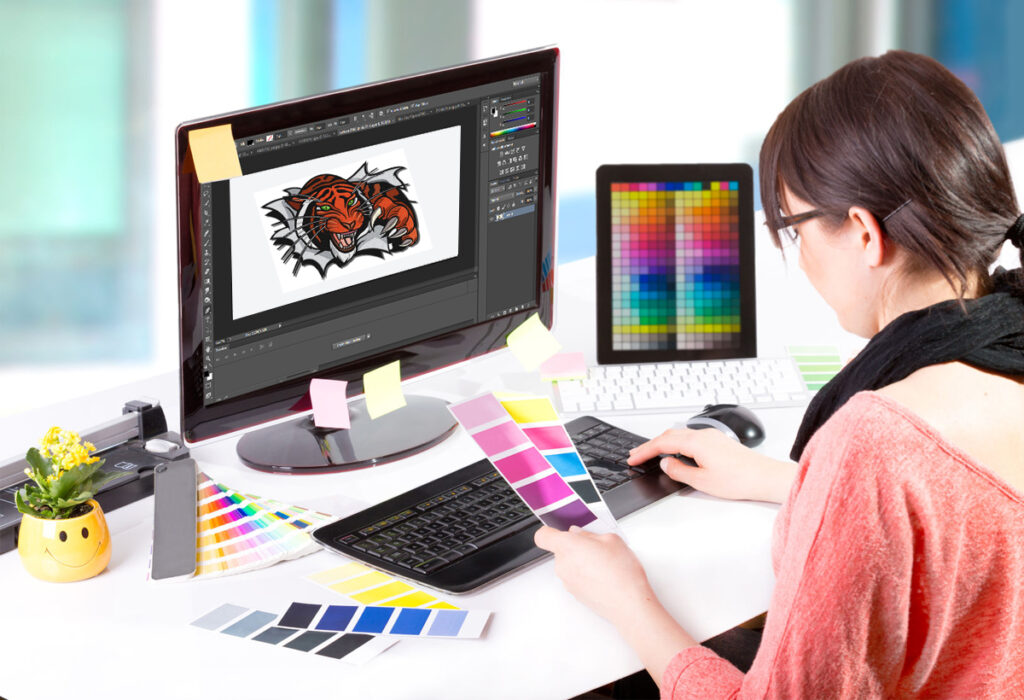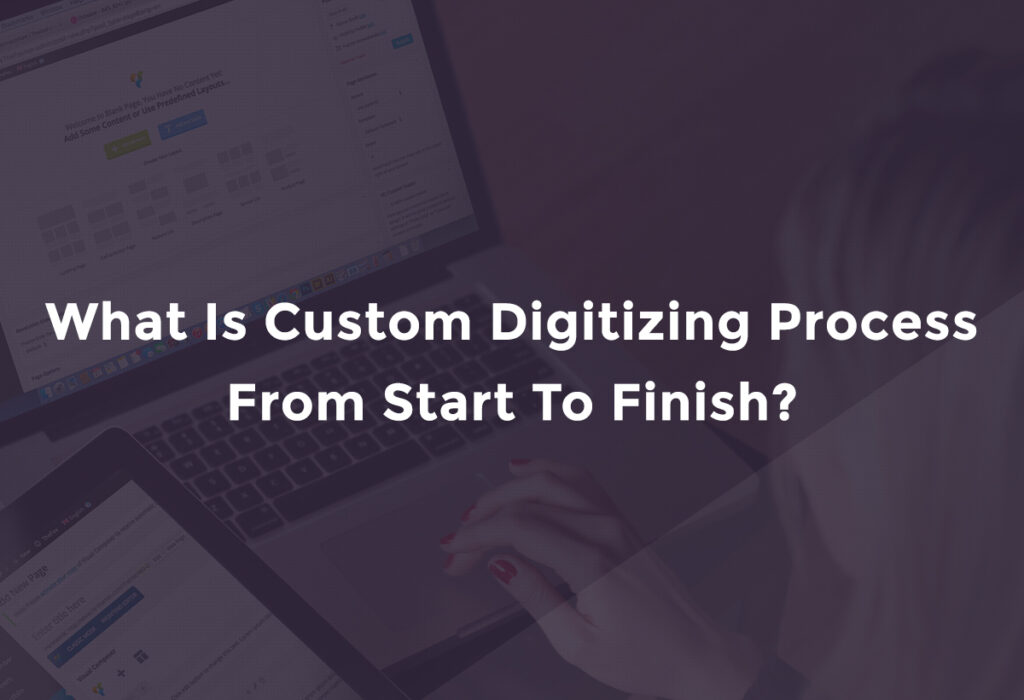Learn about the critical aspects that make custom embroidery digitizing indispensable for producing high-quality and detailed embroidery designs, from logo digitizing to digital embroidery.
The art of converting digital images to machine-readable formats is called embroidery digitizing. The process of digitizing starts with simplifying the complex images to make it all set for embroidery. The artwork is opened using digitizing software, where the digitizer can point the mouse to define the stitches. After modifying the image digitizer needs to decide about the pathing of the design. The pathing is known as the stitches that run out in a specific sequence and are responsible for the final layout of the design. If the embroidery doesn’t run in sequence, it can affect the layout by causing unwanted gaps or missed stitches. The process of portraying the stitches is both technical and highly creative.
Allocation of Stitches
The next step undertaken is to allocate the stitches based on the design. This first step is started by underlay stitches, which are not visible in the final design or logo but are important for a perfect finished look. Underlying helps sustain the fabric and makes a base on the fabric so that the upper layer stitches have a smoother surface and increased density. By not using proper underlay, the fabric underneath the design is visible. Stitches are characterized into three types: run, satin and fill. Digitizer will ensure he is well prepared for the pull and push of embroidery and adjust accordingly for the best result during the final machine work on fabric.
Save the design
After the design is embroidered, the final step is to save it in internal file format. As the embroidery machine and design software use different languages, the digitizer must create a copy for the embroidery machine to read and understand.
Various file formats for Embroidery digitizing files.
There are various internal file formats for digitized images.
.cnd The file format used by Melco Software
.emb The file format used by Wilcom Software
.sew The file format used by Memory Craft 5700, 8000 & 9000 machines
.jef The file format used by Memory Craft
.dst The file format used by Tajima Commercial Embroidery Machines.
csd The file format used by Poem, Huskygram & Singer EU Embroidery Machines
.exp The stitch based file format used by Melco Commercial Embroidery Sewing Machines
.jan The file format contains the Emboridery’s Object Properties
A brand logo has a long-lasting impression on our minds. Custom Embroidery digitizing helps in solidifying the impact of that impression by making it clearer & flawless so that every stitch can be defined. Following are some factors that make embroidery digitizing exceptional:
Custom embroidery digitizing has become a crucial element in the modern embroidery industry. This process involves converting artwork into a digital file that embroidery machines can read and execute. Several factors contribute to its importance:
- Precision and Consistency: Digitizing ensures complex designs are reproduced accurately and consistently across multiple items. This level of precision is difficult to achieve with manual techniques.
- Scalability: Once a design is digitized, it can be easily resized without losing quality, allowing for versatile application on various products.
- Time Efficiency: Digitized designs significantly reduce production time, enabling businesses to meet higher demand and tighter deadlines.
- Cost-Effectiveness: While initial digitizing may cost money, it saves money in the long run by reducing labour and minimizing errors.
- Customization: Digitizing allows for easy personalization of designs, catering to individual customer preferences and branding requirements.
- Complexity Management: Intricate designs that would be challenging or impossible to create manually can be executed flawlessly through digitizing.
- Quality Control: Digitized files ensure consistent stitch quality, reducing the risk of human error in embroidery.
- Preservation and Replication: Digital files can be stored indefinitely and replicated exactly when needed, preserving designs for future use.
- Multi-Machine Compatibility: Digitized designs can be used across different embroidery machines, providing flexibility in production.
- Design Iteration: Digital files allow quick design modifications and improvements without starting from scratch.
These factors collectively make custom embroidery digitizing an indispensable tool in modern embroidery, enhancing quality, efficiency, and creative possibilities.
Bring out the artist present in you and be your own designer by designing customized, eye-catching embroidery digitized patches for your outfits. Make a simple piece of cloth into nice trendy wear.
In conclusion, custom embroidery digitizing plays a crucial role in transforming your ideas into stunning embroidered designs. Whether you’re looking to create unique embroidery designs, enhance your brand with logo digitizing, or achieve intricate digital embroidery patterns, the importance of a skilled embroidery digitizer cannot be overstated. By working with a reputable digitizing company, you ensure that every detail is meticulously crafted, resulting in high-quality, professional embroidery. Embracing the art of embroidery digitizing not only elevates your projects but also sets you apart in a competitive market.


